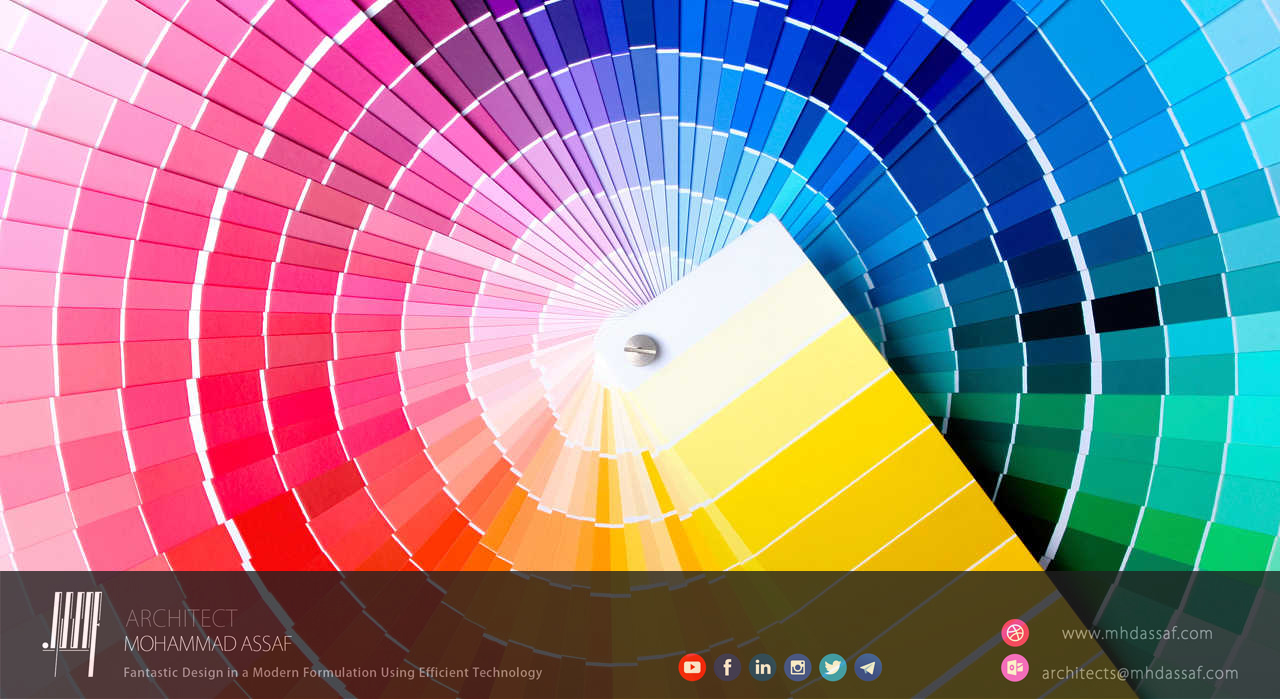Psychological and sensory effects of colors 1
Colors are an essential element in the surrounding environment, whether natural or man-made architecture, where colors play an important role in the human evolutionary process.
The environment and its colors are perceived through sensory brain processes on an objective and subjective basis, including psychological impact, communication, information and all sensory perception processes. The objectives of color design cannot be limited to studies of interior design and decoration. Scientific studies in the field of architectural psychology, color psychology, visual psychology and visual environment The human reaction in an architectural environment depends to a great extent on the perception of color.
Recognizing the color and the message it carries is of utmost importance in creating the psychological state or the atmosphere that supports the function of space. For example, the function of classrooms is different from the rooms of patients in hospitals and dispensaries from the function of offices and investment spaces. Out.
The study in the field of decoration designs and color spaces should possess the necessary knowledge of the neuropsychological aspects of colors, especially their effect on the cognitive contradictions within the studied environment namely sensory deprivation and sensory overload and the effects capable of stimulation and excessive or relaxation and reduce stimulation so as to achieve a certain level of sensory balance away from monotony Dull cold, as well as far from irritability and sensory nervousness, stress research has shown that cases of monotonous sensory or excessive stimulation can lead to dysfunction in the organism.
Monotony and cold give the space users a feeling of restlessness, excessive emotional response, difficulty concentrating and cognitive disorders.The basic signs of the monotonous environment are reflected in their color advantages through the use of colors less than necessary and presumed in the intensity of these weak colors or colors heterogeneous or monochromatic.
Excessive stimulation can lead to changes in the respiratory rate, increase the pulse rate, and increase pressure and tension.A key signs of an over-stimulating environment are strong color intensity, very complex or heterogeneous color consistency, strong color contrasts and many complex visual color patterns.
Recent research in neuropsychology has confirmed that sensory emotional responses are faster and more effective than cognitive and analytical processes.
We must at the end of the talk to emphasize the need to pay attention to the selection of colors that will be applied in the architectural space so that contributes to the achievement of sensory balance and provides the psychological and visual comfort required and serves the function of the vacuum.
Source: Twenty Two Architectural Magazine Issue 78
